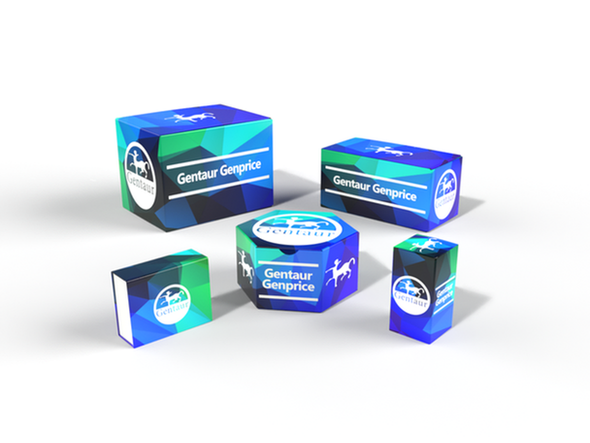Description
SCGB1D2 Antibody | 57-276 | Gentaur UK, US & Europe Distribution
Host: Rabbit
Reactivity: Human
Homology: N/A
Immunogen: This SCGB1D2 antibody is generated from rabbits immunized with a KLH conjugated synthetic peptide between 22-50 amino acids from the Central region of human SCGB1D2.
Research Area: Cancer, Signal Transduction
Tested Application: WB
Application: For WB starting dilution is: 1:1000
Specificiy: N/A
Positive Control 1: N/A
Positive Control 2: N/A
Positive Control 3: N/A
Positive Control 4: N/A
Positive Control 5: N/A
Positive Control 6: N/A
Molecular Weight: 10 kDa
Validation: N/A
Isoform: N/A
Purification: This antibody is purified through a protein A column, followed by peptide affinity purification.
Clonality: Polyclonal
Clone: N/A
Isotype: Rabbit Ig
Conjugate: Unconjugated
Physical State: Liquid
Buffer: Supplied in PBS with 0.09% (W/V) sodium azide.
Concentration: batch dependent
Storage Condition: Store at 4˚C for three months and -20˚C, stable for up to one year. As with all antibodies care should be taken to avoid repeated freeze thaw cycles. Antibodies should not be exposed to prolonged high temperatures.
Alternate Name: Secretoglobin family 1D member 2, Lipophilin-B, SCGB1D2, LIPHB, LPNB
User Note: Optimal dilutions for each application to be determined by the researcher.
BACKGROUND: The protein encoded by this gene is a member of the lipophilin subfamily, part of the uteroglobin superfamily, and is an ortholog of prostatein, the major secretory glycoprotein of the rat ventral prostate gland. Lipophilin gene products are widely expressed in normal tissues, especially in endocrine-responsive organs. Assuming that human lipophilins are the functional counterparts of prostatein, they may be transcriptionally regulated by steroid hormones, with the ability to bind androgens, other steroids and possibly bind and concentrate estramustine, a chemotherapeutic agent widely used for prostate cancer. Although the gene has been reported to be on chromosome 10, this sequence appears to be from a cluster of genes on chromosome 11 that includes mammaglobin 2.






